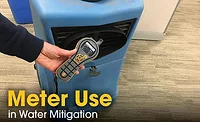The Digital Myth: Unlock the Truth Behind Embracing Industry Technology

You’ve heard the promises. The world is changing and the ubiquity of mobile devices, software and all things connected will bring the chaos of your world to rest. Streamlined data capture, automated reporting… and it all sounded so good! So, you bought the tools, paid the subscriptions, then handed the keys to your team to implement. But the promises quickly dissolved amidst the countless complaints from your staff, quoting one road block after another and why the new way was harder than the old.
How did the conceptual promise fall flat against your actual reality? Let’s take a moment to explore this common scenario – but first, a few truths that must be spoken. Please, leave your vested bias about your organization’s strengths at the door – the gloves are off in the next few paragraphs.
The primary barrier to implementation is your tech – and I’m not talking about the tools. If the process of entering the necessary information to fully tell the loss story is taking more time in the digital world than it did the old way, then one of the following must be true:
- The tech wasn’t using that same information in the old method – it was a guess at best – and you weren’t compliant with standards in that method.
- The tech hasn’t been trained on the tool and how to use it properly, and the ’time’ was based on more than entry – it was learning on the job, fraught with frustration and lack of familiarity.
- You’ve embraced a system that is incomplete or is not supported by critical integration and thus duplicate entry or documentation is required to support your clients.
Short of item #3, the problem is that the tech was never prepared properly, in some cases well before the implementation even started. They may never have fully understood how to implement standards, but the lack of transparency created by a manual documentation system let that problem lay undetected.
Another set of truths to consider:
- Industry standards are becoming more complex, requiring more mathematical analysis to drive objective decision making.
- Insurers, TPAs and other stakeholders are requiring more robust documentation to fully memorialize the project and it’s overall successes and shortcomings.
- The trend for increasing transparency in documentation and results will not reverse; It will grow as more electronic systems and software become further connected.
The simple fact is that a mobile device alone offers the autonomous efficiency of location, time, duration, and lookup tables that eliminate the need to document arrival, time of service, location of service, or even the full description for a service or item. Multiplied by 30-40 items or services in a given project, this alone should be reducing your time for entry by a sizable margin on most jobs. If it isn’t, refer to the first set of truths above. One of those is the culprit.

And, once that information is captured, the mobile platform offers the reliability of computation to derive mathematical results for standard compliant equipment requirements, determination of water ‘Class’ and other relevant math based decisions. How long would it take to manually compute the total square footage of walls, floors and ceilings and derive the percentage of wet area (i.e. determine Class)? It takes a while with pen, paper and a calculator – I know first hand! To believe this is being done with regularity in the field is wishful thinking at best.
The digital age is here. If you are struggling with implementation, check first to ensure that your selected option truly eliminates the ‘old’ methods. If it doesn’t, look for another solution – I guarantee you it is out there. Second, and only if the previous is true, look to your implementation. Specifically, your tech. They are the most important component of your digital success. Ensure they have the tools they need (training, support) to eliminate the fumbling frustration of learning in the field. That solution you selected? It should solve for that. That subscription pays for training and support – use it!
Looking for a reprint of this article?
From high-res PDFs to custom plaques, order your copy today!





